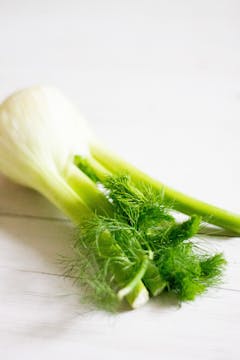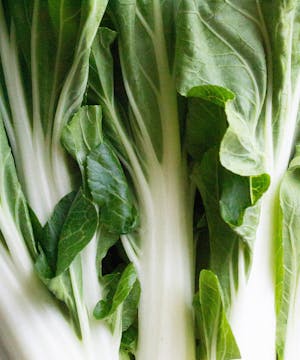7 (more) vegetables you can regrow just from scraps
Back in April, we posted this blog on how to regrow your vegetables from your scraps and we’ve been thrilled to see so many of you growing your own lettuce and spring onions on your windowsills. Keep the green-fingered trend alive and grow more of your veg, from carrot greens and cabbage to ginger and fennel at home, all while fighting food waste. Don’t forget to tag us @oddboxldn along the way.
Top tip: Make sure you regularly change the water of your budding plants so they don’t get a chance to rot or go mouldy.

CARROT GREENS
These herby greens are delicious chopped up into a salsa or blitzed into pesto, and you can grow them from the carrot tops you’d usually throw away.
- Put approximately 2-inch carrot tops (the end with the root) in a small bowl with the root end facing up.
- Fill halfway with water and place on a sunny windowsill.
- Replace the water daily until they start to sprout little shoots (this will only take a few days).
- After about a week, plant in nutrient-rich soil, ensuring the shoots are not covered, and watch them grow! You can harvest them as soon as there’s enough.
BOK CHOY
These Asian greens are easy to regrow from the root.
- Put the root end of your bok choy (about 2 to 3 inches, with all the leaves chopped off) in a small bowl.
- Fill halfway with water and place on a sunny windowsill.
- Replace the water every couple of days. In a few days, you’ll see leaves start to sprout in the centre.
- After about a week to 10 days, plant in nutrient-rich soil so it’s almost totally covered with just the tips of the new leaves above the soil. Water generously everyday.
- After 2 to 3 months, you’ll have enough to harvest.
CABBAGE
Try this with just about any variety of cabbage.
- Put a few leftover cabbage leaves with the root end attached into a bowl and add a little water in the bottom.
- Leave the bowl on a sunlit windowsill, replacing the water every couple of days or so.
- After 3 to 4 days, roots and new leaves will begin to grow. At this point, plant the roots in soil or you can continue to replace the water and take the new leaves as and when you need them.
FENNEL
Deliciously aniseed in flavour, use the green fronds as you would any other regular herb, in salads or as a garnish for soups or stews.
- Place the base of your fennel in a small bowl and fill halfway with water.
- Leave the bowl on a sunlit windowsill, replacing the water every couple of days or so.
- Within a couple of weeks, green shoots will have sprouted up and roots will begin to grow from the base.
- After about 3 weeks, the roots should be big and strong enough. Replant in nutrient-rich soil and wait for it to grow!
GINGER
Ginger is so easy to regrow – all you need is a little patience.
- Take a small piece of fresh ginger that has a few growing buds (these look like little bumps or horns on the ginger) and soak in water overnight.
- Plant the soaked ginger in a pot of nutrient-rich soil so it’s completely covered, with the buds pointing up.
- Keep on a warm sunlit windowsill. Ginger thrives in warmth and humidity so water daily.
- After a few days you’ll see it start to see the ginger sprout out of the soil. Wait at least four months until you dig it up.
BEETROOT LEAVES
Beetroot leaves can be used like spinach, wilted in a pan with garlic and eaten with a squeeze of lemon juice, and you can regrow them from the beetroot ends you’d usually throw away.
- Put approximately 2-inch beetroot tops (the end with the root) in a small bowl with the root end facing up.
- Fill halfway with water and place on a sunny windowsill.
- Replace the water daily until the tops start to sprout little shoots.
- After about a week, plant in nutrient-rich soil, ensuring the shoots are not covered, and wait for them to grow.
POTATOES
You’ll need an outdoor space for this one, but it’s such a great way to use old sprouted potatoes, we had to include it. You’ll need potatoes that have little ‘eyes’ or with white tubers growing from them. Plant potatoes in the spring or summer, rather than winter.
- Cut your sprouted potatoes in half, ensuring each piece has a couple of ‘eyes’.
- Leave them to dry for a couple of hours with the wet, skinless side exposed.
- Plant in your garden with the cut sides facing down and the sprouts facing up, and water regularly. You’ll see the inedible potato plants sprout after a few days.
- Dig them up after several months.



